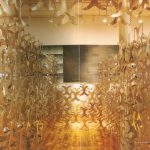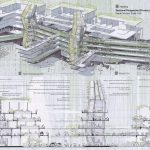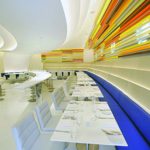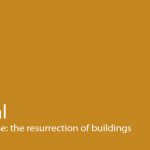-
A Dwelling With Multiple Functions
January 2013
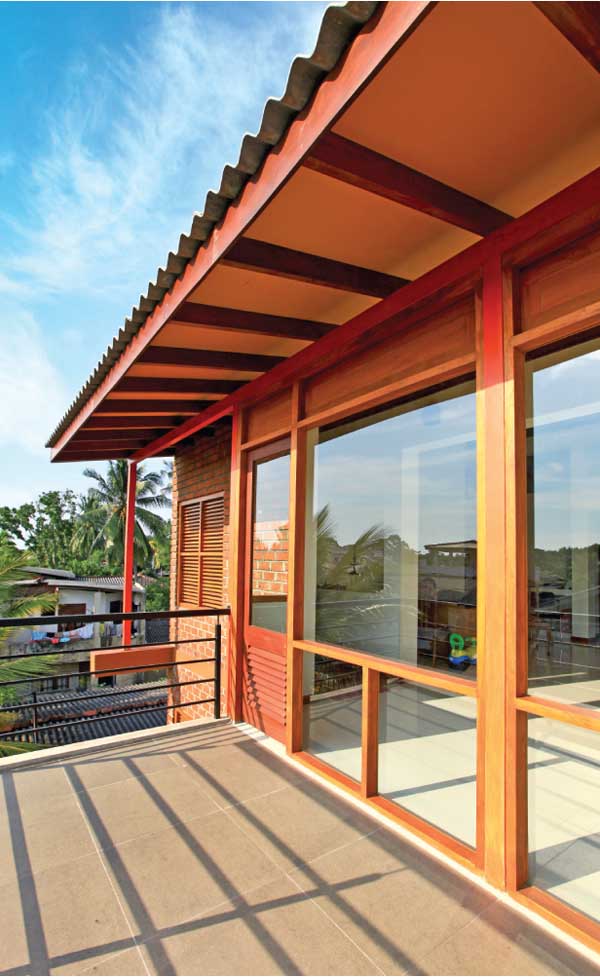
Within the vicinity of Atthidiya marsh at Boralasgamuwa, the house stands out in unique rustic colours, yet spells out simplicity. The triple storey brick house with peculiar elegance was designed on merely six perches. A multipurpose nest, the house is not the Architect’s permanent residence, but has the functional possibility of being used as a home and an office space when required.
By Dheena Sadik | Photography Indika De Silva
Archt Lakshman Seneviratne explained his personal intent to create a distinctive design with the aim to be of “multiple usage which can be used as a single house, two houses and one office or one, two or three offices.”
There are two bedrooms on the first and second floor, each having a pantry area, a common bathroom and balcony as well. The first and second floor can be combined as a residential house, while the ground floor can be used as an office. The ground floor has a larger office area, single room and a bathroom. There is an individual common staircase externally, leading to both floors independently; therefore all three floors could be leased to different clients if necessary. It’s a fusion of residential cum commercial use.
Despite the limitation of space, 25 feet was allotted for parking which accomodates up to three vehicles. The uncommon design of the gate with its stylish triple individual compartments, have independent range of motion. Any compartment can be closed and opened separately, ensuring that three vehicles can be parked freely without the hassle of disturbing each other’s spaces.
The materials have been used in a distinctive style for the self-designed second crib by and for Archt Lakshman. Unlike the common ritual of plastering bricks externally, this particular brick house has avoided external plastering – attaining the desired austere finish. However, internally the appearance is relatively smoother with plastered walls and delicate pastel shades. Steel has been used creatively with timber and glass, giving an aesthetic appeal which Archt Lakshman describes as “a fusion of contemporary and modern form.” The ventilation remains mechanical sans air conditioning considering urbanisation of the surrounding neighborhood has been strictly restricted, offering relatively clean fresh air. His inspiration for the design emanated from “shop houses,” linear street houses with small verandahs found in several older towns from the past, which can still be seen in a few cities today. To add diversity, the Architect added steel and exposed the bricks externally.
The breathtaking view of the lush green landscape from the second floor balcony more than compensates any lack of ground space…
Unarguably, the greatest challenge faced was limited space; needing as much open space as possible to keep the views from both verandas unobstructed. However, the breathtaking view of the lush green landscape from the second floor balcony more than compensates any lack of ground space; promising every dawn and dusk to be beautiful experiences.
On designing his own house, Archt Lakshman elaborated that the rustic exterior and smooth internal design of the house were intended as a reflection of his own personality and identity. It is further combined with his personal preference for natural earthy colours.
It was with a sense of accomplishment that Archt. Lakshman concluded, “spatially, the design transformed exactly as planned”.
Principle Architect: Lakshman Seneviratne
Structural Engineer: Nuwan Bandaranayake
Total Area of the House: Six Perches
Date of Completion: August 2012
Project Period: One Year









